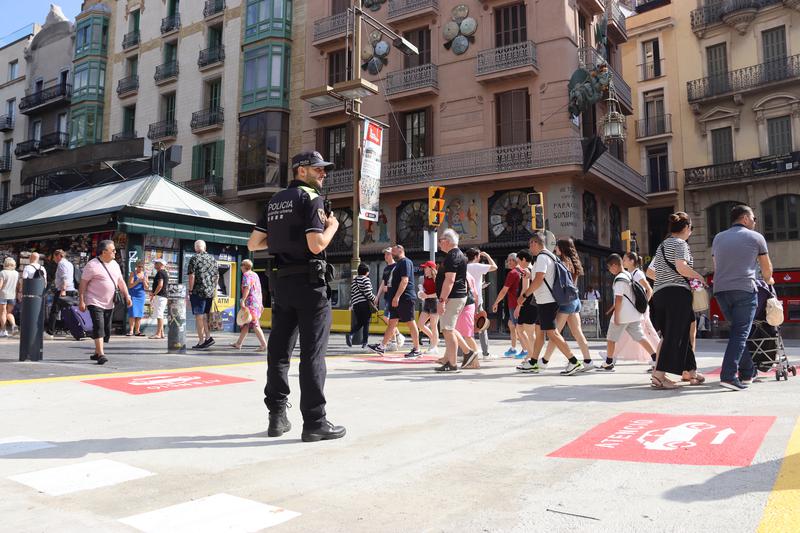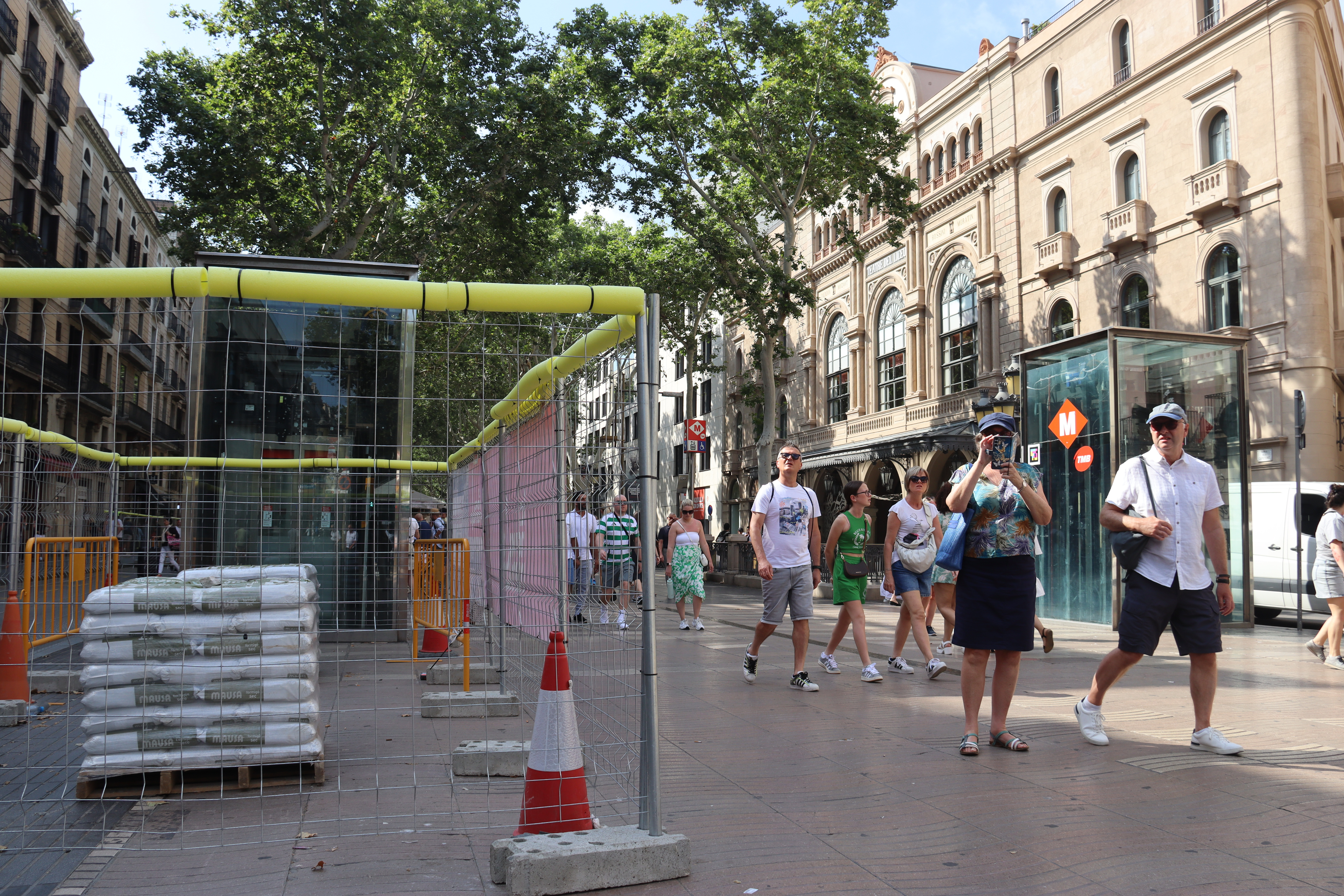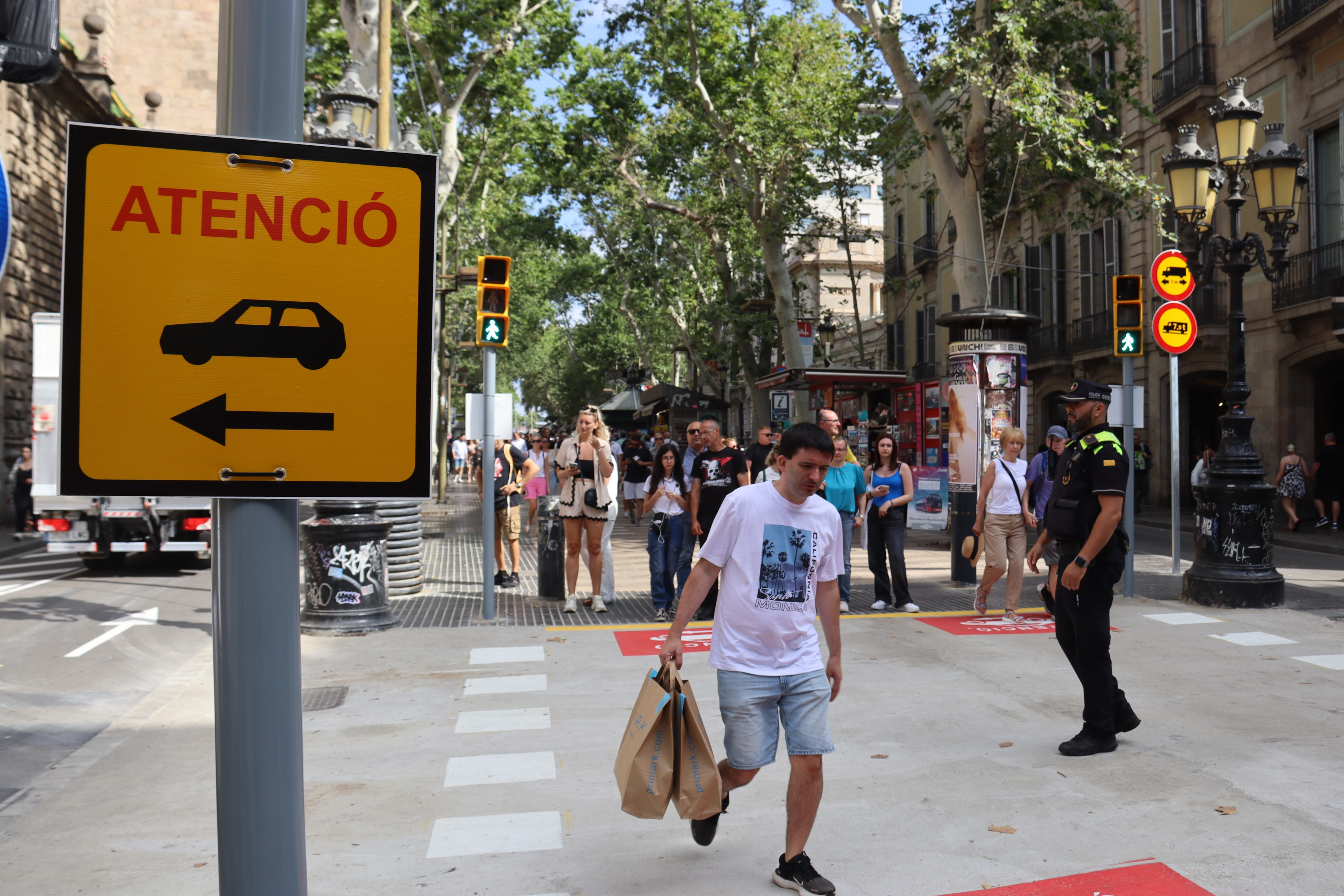Artists grapple with a changing La Rambla Boulevard
Street performers find it difficult to sustain lifestyles due to changes in famous site

"When music dies, art dies, and humanity will die because art is what makes us human; otherwise, we would be animals." This poignant quote from Marco Garrido, a street guitarist, reflects his concern about the waning public interest in music on La Rambla boulevard in Barcelona's city center, which does not bode well for him and other street performers.
With a history dating back to the late 19th century, Barcelona's street performers characterize the city's vibrant landscapes. From living statues to rappers and singers, street performers practice their art across various mediums and are a recognizable staple of La Rambla.
As La Rambla has changed over time, street performers have had to adapt to shifting public interests and social dynamics.
Obstacles including city regulations, shifting public interest, long-term construction projects, and residential complaints have added to artists troubles, making it more difficult for artists who rely on donations from pedestrians and passersby to make a comfortable living.
With Plaça Catalunya square and La Rambla undergoing rapid change in the aftermath of Covid-19, the competing interests of tourists, residents, law enforcement, and artists have also come to negatively affect street performers whose art functions as their primary form of income.
Working several jobs, navigating bureaucratic tape regulating where and when artists can perform, and remaining committed to long hours with little pay are becoming common and overwhelmingly necessary measures for Barcelona's street performers to support themselves.
For artists like Marco Garrido, the money earned from playing could easily be outweighed by that of a part-time job.
Pointing to a decline in interest from younger audiences, as well as the stringent enforcement of limits on the hours and locations artists can perform, performers feel pressure to find alternative forms of income or even abandon their crafts altogether.

The following quote from Kwame Adzraku, another La Rambla performer, reflects some of the sentiments that underlie many artists' decisions to leave street performing behind.
"When we look inside the music scene now, the people are not enjoying the music the same way, we no longer even see bands"... "When I arrived in Barcelona in 2003, the first few years were nice, people engaged with music completely, now, people don't want to pay for a good band"
With public interest seemingly plateauing and regulations remaining unchanged, the exodus of street performers has consequently left a dearth of art on portions of La Rambla that have traditionally been sites of artistic expression.
Regulations over time
City regulations have taken a steady toll on pay and overall quality of life for street performers over time. Twelve years ago, Barcelona metropolitan transport (TMB) and the city council, in collaboration with the Street Musicians association (AMUC), established a series of rules that addressed performances in Barcelona's streets and subways.
These regulations restricted the locations where musicians could perform, specifically within the subway and the La Rambla area. Additionally, artists were required to obtain a license and pass a quality control test to be authorized to play.
This system, while aimed at maintaining a certain standard of performance, gradually made it more challenging for street performers to earn a living as changing audiences, populations, and demographics outpaced the versatility of regulations over the last decade.

For saxophonist Alexis, this has meant adhering to stringent policy over extended periods of his career. When asked how he navigates this regulation Alexis commented, "There are some fundamental requirements to perform in the metro or on the street, including requesting permits and filling out specific paperwork. This makes you focus on that part, and you pay, for example, to fill out the form and go through the process."
Historically, street performers have been part of La Rambla, but as Alexis and many more discussed with Catalan News, the current situation makes it difficult to foresee a future without obstacles to stability.
La Rambla Renovations
Recent plans to begin renovations on La Rambla boulevard have also contributed to street performer´s financial and regulatory worries this summer and into the foreseeable future.
Construction has been underway for months at the end of the street, and more recently the boulevard has experienced . Full renovation is expected to be completed by January 2027. Meanwhile,artists will need to time their performances around construction schedules as well as assigned time slots.
While La Rambla boulevard’s renovations will enhance the street’s walkability and ecology, the question of how performers will weather the current and upcoming obstacles associated with La Ramblas changes remains unanswered.